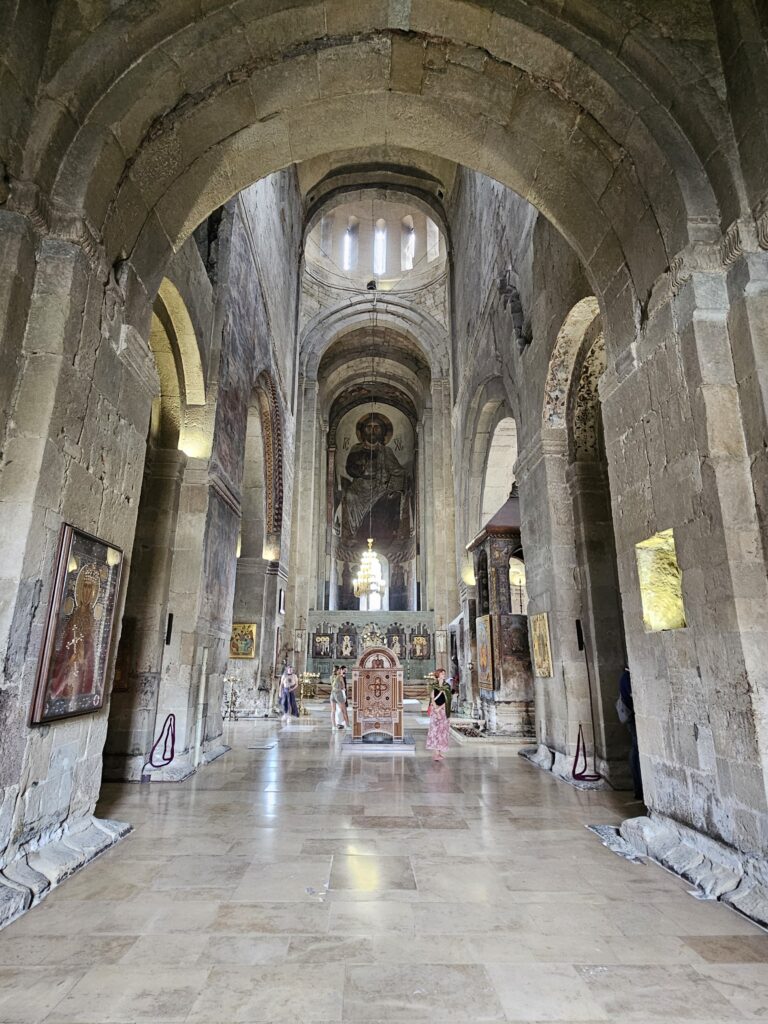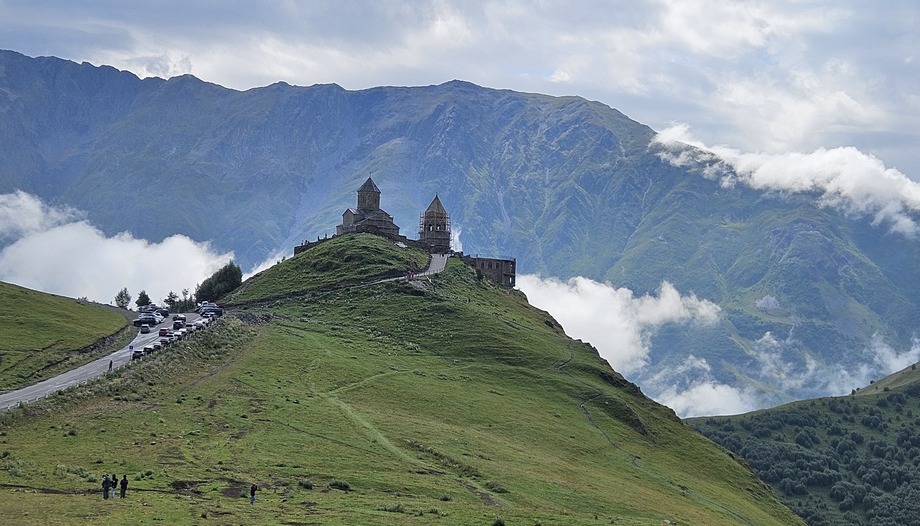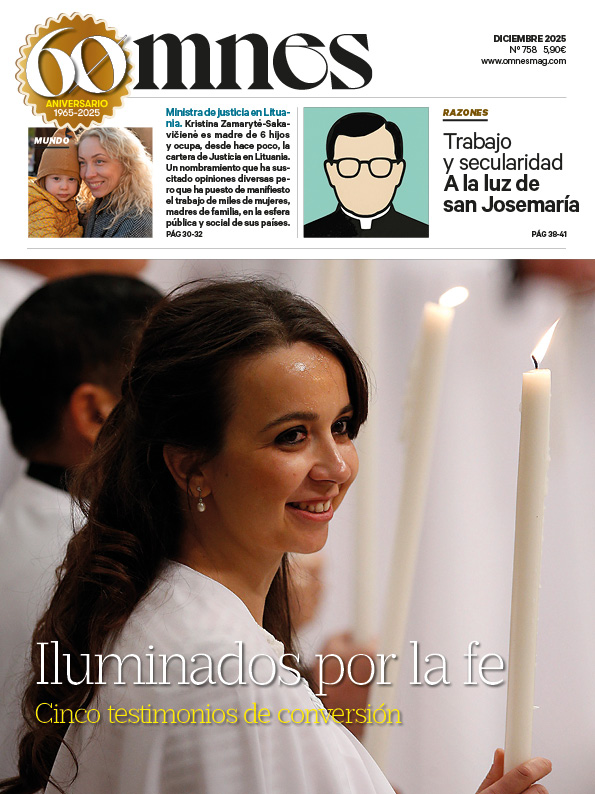I don't like surprises. I like to inform and document myself about everything around me. However, before traveling to Georgia this summer, I chose to read little, to approach the trip expecting some surprises, especially since the first stop on my visit to the Caucasus was Armeniaabout which I wrote several articles for Omnes. So I went from a country I knew almost everything about to a country I knew little about. And I must admit that I was very surprised.
A small big country
Georgia is a small country in the South Caucasus located on the eastern shore of the Black Sea, straddling Europe and Asia and between the two mountain ranges of the Greater Caucasus to the north and the Lesser Caucasus to the south, but it is a real treasure to be discovered. With an area of 69,700 km² (bordered to the north by the Russian Federation, to the south by Turkey and Armenia, and to the east by Azerbaijan), it has a fascinating capital, Tbilisi, with some 1.3 million inhabitants. And it was precisely from Tbilisi that my trip began, which ended on the peaks of the Caucasus, on the border with the Russian Federation, at the wonderful Holy Trinity Monastery of Gergeti.
In Tbilisi, from a viewpoint at the foot of the old city, next to the beautiful Metekhi church and the statue of the mythical king Vakhtang Gorgasali (439 or 443 - 502 or 522), founder of the city, we contemplate the castle, the famous ancient baths (it is said that the name of the city derives from the sulfurous waters that flow there) and the Kura river just below us.
Before taking a long walk through the city's narrow streets, we retraced the country's long history, which dates back to the Paleolithic era. In fact, over the millennia, the region was a crossroads of civilizations and peoples from Anatolia, Persia and Mesopotamia. During the Bronze Age, several cultures flourished, such as the Trialeti culture, which laid the foundations for later Georgian civilizations.
Wine and gold
There are two surprising details: the "invention" of wine in Georgia and the very advanced treatment of gold.
As for wine, viticulture has been attested in Georgia for about eight thousand years (so much so that the oldest amphora with traces of wine, dating from 6000 BC, was found in this country and is preserved in the Georgian National Museum in Tbilisi). Of the fragrant and sparkling wines of this region, by the way, Homer already spoke in the "The Wine of the Sea".Odyssey".
The same terracotta jars are still used today, in a country that has at least 500 species of vines suitable for winemaking (in Italy, where the oldest example of grape fermentation "only" dates back 6000 years, there are 350). The region where 70 % of the wine is produced is Kakheti, east of Tbilisi, where we were able to taste, among bucolic landscapes and ancient monasteries, several wines fermented in amphorae, including the famous Saperavi.
As for gold, the archaeological treasure on display in the museum itself is impressive, with its immense collection of gold, silver and pre-Christian precious stones from tombs of the 3rd millennium BC, of extremely fine chiseling and workmanship, especially those found in Colchis (western Georgia), a region not infamous for the myth of the Golden Fleece and the Argonauts, with the legendary Medea, daughter of a king of this same land.
From a map of Georgia, which my exceptional guide displayed on a small wall from which we could admire the Europe Square, a large square filled with flags of the European Union (omnipresent throughout the country, along with the Georgian flags) and the scene, in recent times, of several popular demonstrations, one can see how this nation is literally nestled in the Caucasus, among powerful and unwieldy neighbors, and, in its complex and rugged territory, several ethnic groups coexist (along with the majority Georgian), among them the Armenian (in the south), Ossetian (in the north) and Abkhazian (in the northwest, on the shores of the Black Sea). And it was precisely the two regions of South Ossetia and Abkhazia that proclaimed their independence, provoking bloody conflicts (independence, however, only recognized internationally by Russia).
Some data
The territory of Georgia is characterized by a great variety of landscapes: from the Caucasus Mountains, with peaks exceeding 5,000 meters (Mount Shkhara is the highest, at 5,193 meters, in the north), to the fertile central plains and the Black Sea coast. The climate varies from temperate in the coastal zone to alpine in the mountainous regions.
Georgia is a semi-presidential republic, with the President as Head of State and the Prime Minister as Head of Government. The population is around 3.7 million, the majority ethnic Georgians (over 83 %), with Armenian (5.7 %), Azerbaijani (6 %) and Russian (1.5 %) minorities.
The official language is Georgian, a language with its own alphabet (there are actually three Georgian alphabets). On the religious level, Orthodox Christianity predominates, and the Georgian Orthodox Church (now autocephalous) has always played a prominent role in the social and cultural life of the country.
A bit of history
The oldest Georgian kingdom was therefore that of Colchis, along the Black Sea coast, famous in Greek mythology as the land of the Golden Fleece. According to many scholars, especially contemporaries, the inhabitants of Colchis may be defined as proto-Georgians. This kingdom developed commercial and cultural relations with the Greeks since the 1st millennium BC, becoming an important commercial center.
However, another kingdom flourished in the interior of the country, that of Iberia, also known as Kartli. This kingdom, founded around the 4th century BC, became one of the main centers of the Caucasus. Its strategic location made it an object of dispute between the Roman Empire and the Parthians, and later between the Byzantines and the Sassanids. During the reign of King Mirian III in the 4th century AD, Iberia adopted Christianity as its official religion, making Georgia one of the first Christian countries in the world, shortly after Armenia.

In the period between the 9th and 13th centuries, often referred to as the "golden age" of Georgia, the country was unified under a series of important kings and queens, such as David IV, known as "the Builder", and his niece, Queen Tamara (both considered saints by the Georgian Church). With them, Georgia became one of the most powerful states in the region and expanded throughout much of the Caucasus. During this period, Tbilisi became a major center of culture, art and architecture.
This era of prosperity ended, however, with the Mongol invasion in the 13th century, followed by Tamerlane, the various Persian khanates and the Ottomans, which led to the gradual weakening of the Georgian kingdom and a long period of decline and fragmentation.
Precisely to seek protection from Ottoman and Persian incursions, Georgia turned to Russia in the 18th century and, in 1783, the Treaty of Georgievsk sanctioned Russian protection over the kingdom of Kartli-Kakheti, which was later formally annexed in 1801, bringing the whole of Georgia gradually under Russian rule.
Russification process
During the 19th century, Georgia underwent a process of Russification, with the loss of many of its traditions (dramatic proof of this is the plastering of Georgian church frescoes by the Russians), as well as its political autonomy. In reaction, however, this same period also witnessed a great cultural awakening, with the revival of Georgian literature and national consciousness.
After the Russian Revolution of 1917, Georgia declared its independence on May 26, 1918, with the birth of the Democratic Republic of Georgia, which, however, was short-lived, since in 1921 the Red Army invaded the country and annexed it to the Soviet Union as the Georgian Soviet Socialist Republic.
During the Soviet period, Georgia underwent a radical transformation. Despite fierce political repression and massacres, it managed to preserve its strong cultural identity (many prominent figures, including Soviet leader Iosif Stalin, were of Georgian origin).
Over the years, discontent with the Soviet regime grew, until the events of April 9, 1989, when a peaceful demonstration in Tbilisi was violently repressed by Soviet troops, causing a massacre among the civilian population, with 20 dead and hundreds wounded.
With the collapse of the Soviet Union in 1991, Georgia again declared independence, but its first years as a sovereign state were anything but easy, both economically and due to political turmoil and ethnic conflicts.
Conflicts and tensions
The regions of Abkhazia and South Ossetia proclaimed secession, leading to bloody conflicts that left these regions in a de facto, but not internationally recognized, state of independence.
In particular, the ethnic cleansing carried out against the Georgians of Abkhazia by Abkhazian separatists, supported by foreign mercenaries (including, unfortunately, Armenians) and forces of the Russian Federation during the Abkhazian-Georgian war (1991-1993 and again in 1998), is infamous. Between 10,000 and 30,000 Georgians lost their lives, victims of unspeakable violence, and about 300,000 had to seek refuge in the rest of Georgia, with a significant decline in the population of Abkhazia, where Georgians constituted 46 % of the population before the war.
In 2003, the Rose Revolution brought to power a reformist government led by Mikheil Saakashvili, which sought to modernize the country and bring it closer to the West. However, this government was marked by tensions with Russia, which culminated in the Russian-Georgian war of 2008. The conflict lasted only five days and ended with Georgia's defeat and Russia's recognition of the independence of Abkhazia and South Ossetia, which accentuated the rift between Georgia and Russia.
Georgia today
In recent years, Georgia has made considerable economic and institutional progress, while facing significant challenges. The country, also after the war between Russia and Ukraine (which led to a massive immigration of Russians to Georgia) pursued a foreign policy aimed at Euro-Atlantic integration, with the goal of joining NATO and the European Union, which granted it candidate status in 2023.
However, the current government, with the Georgian Dream party in power, maintains a rather ambiguous attitude, on the one hand favoring the rapprochement of Georgia to the European Union, but then introducing, in domestic policy, a series of authoritarian laws, such as the one that assimilates all foreign NGOs to enemy agents. Precisely on the occasion of the approval of the latter, massive street protests were held in Tbilisi in the spring of 2024, in which the mostly young demonstrators waved EU flags and accused the government of pursuing a pro-Russian and despotic policy.







